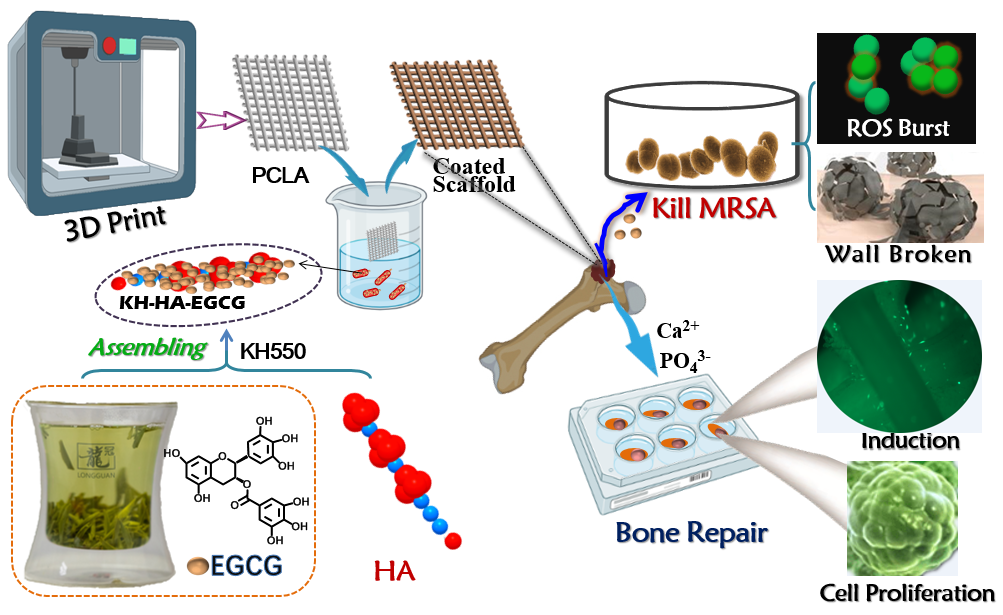
Progress Made in Application of Tea-Polyphenol-Based Material as New Antibacterial Coating
A new material based on self-assembled tea polyphenol has recently been developed by the Innovation Team of Tea Quality and Risk Assessment of the Tea Research Insitute of CAAS (TRI CAAS) for potential application as a new antibacterial coating.
Tea polyphenols (EGCG) are beneficial to human health and have good antibacterial activity. However, the polyphenolic hydroxyl structure makes it extremely easy to inactivate in vitro and in vivo. Therefore, achieving the in situ release of EGCG from the site of infection is an urgent challenge.
To tackle this issue, scientists from TRICAAS, used the strategy of EGCG self-assembly to construct a 3D printed multifunctional scaffold that can promote bone repair and resist bacterial colonization in situ. The EGCG self-assembly coated scaffolds (PCLA/KH-HA-EGCG) exhibit excellent activity for simultaneously stimulating osteogenic differentiation and in situ resisting methicillin-resistant Staphylococcus aureus (MRSA) colonization in a bone repair microenvironment without antibiotics (Figure 1). The study performed a risk assessment on the cellular and blood safety of PCLA/KH-HA-EGCG and found that the scaffolds had good biocompatibility. In general, this versatile and simple self-assembly strategy are expected to be applied as a new antibacterial coating to tissue engineering materials and medical devices. The above findings were recently published in Cell Proliferation (Cell Prolif. 2022;e13289).

Fig. 1. Schematic diagram of EGCG self-assembled HA coating on 3D printed PCLA scaffold. PCLA/KH-HA-EGCG can effectively promote osteogenic differentiation and in situ inhibit MRSA colonization in bone repair microenvironment.
Dr. Zhang Xiangchun from TRI CAAS and Dr. He Jian from the Henan University of Science and Technology contributed equally to this work as co-first authors. The work was funded by the National Key Research and Development Program of China, Central Public-interest Scientific Institution Basal Research Fund, and the Science and Technology Innovation Project of CAAS.
Find more at:
https://onlinelibrary.wiley.com/doi/10.1111/cpr.13289
By Zhang Xiangchun (zhangxc@tricaas.com)